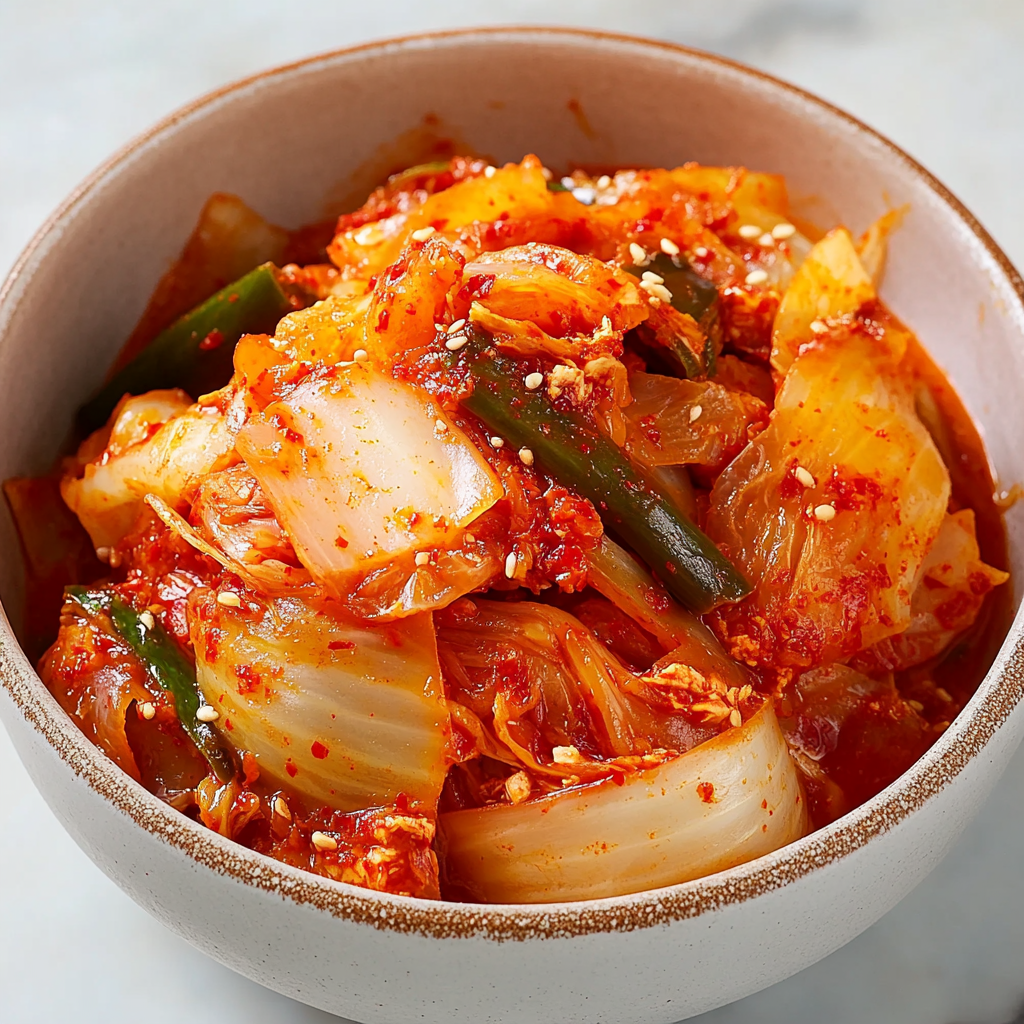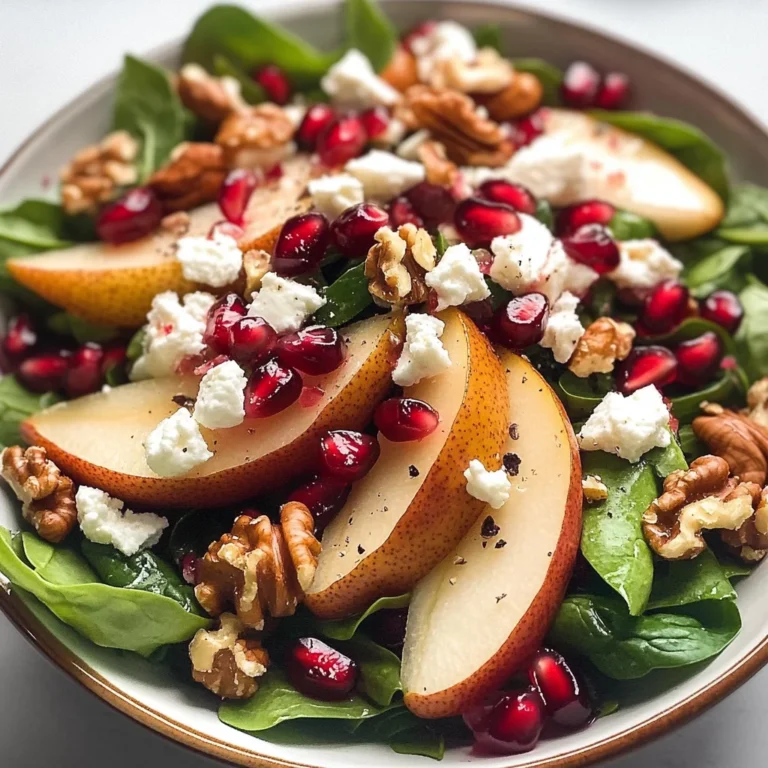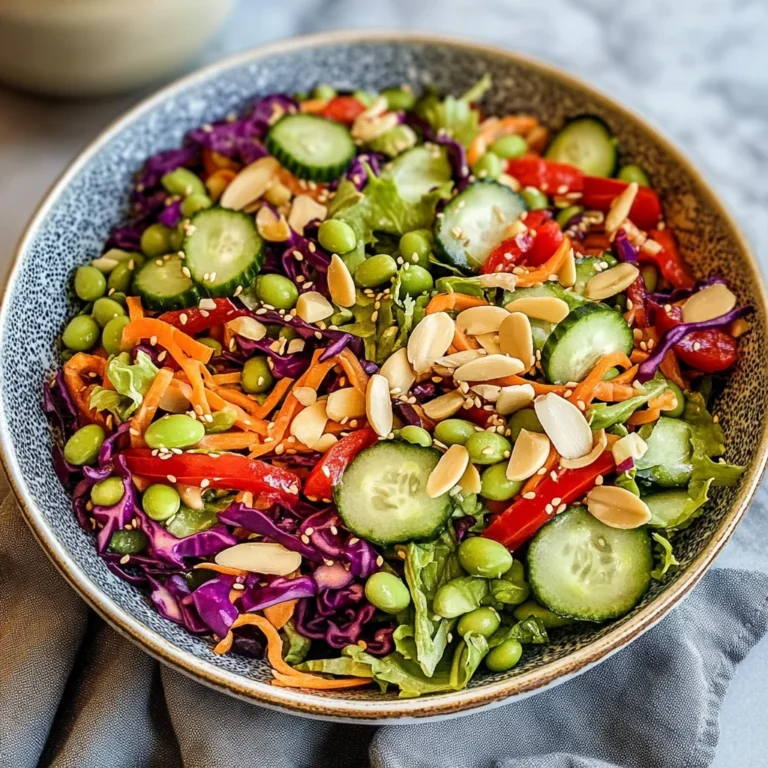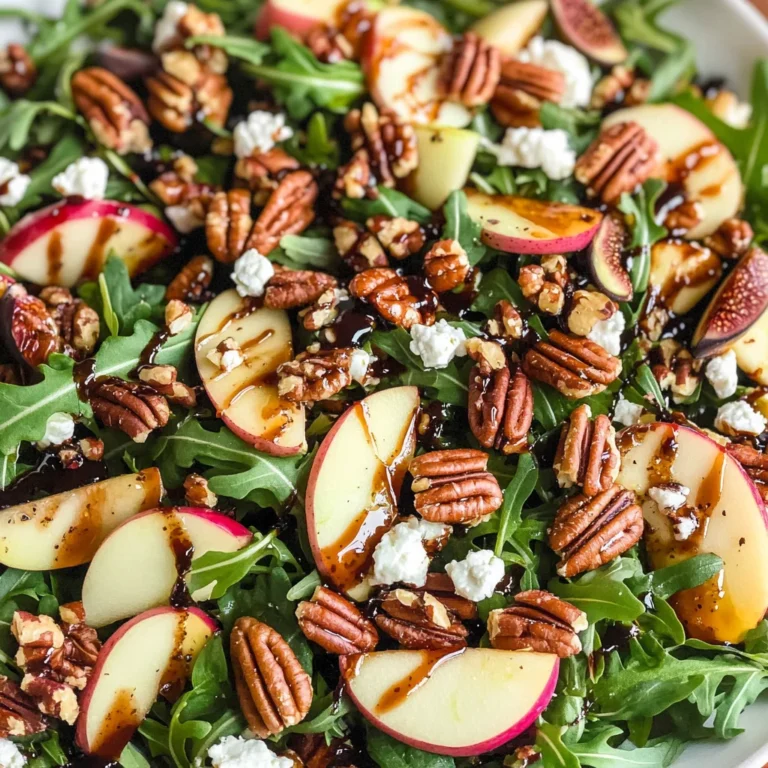Traditional kimchi (Pogi Kimchi)
If you’re looking for a delicious way to spice up your meals, then this Traditional kimchi (Pogi Kimchi) recipe is just what you need! This vibrant and tangy dish is a staple in Korean cuisine and perfect for adding some zest to any table. Whether you’re enjoying a quiet dinner at home or hosting a family gathering, kimchi brings everyone together with its unique flavors and crunch.
What makes this recipe special is its simplicity and the joy of making it from scratch. It’s an excellent choice for meal prep since it keeps well in the fridge, allowing you to enjoy it over several days. Plus, once you get the hang of it, you’ll find that making traditional kimchi at home isn’t as daunting as it might seem!
Why You’ll Love This Recipe
- Easy to prepare: With straightforward steps, this recipe allows anyone to make authentic kimchi without fuss.
- Family-friendly: Kids will love the crunch, and adults will appreciate the complex flavors—it’s a hit for all ages!
- Make-ahead goodness: You can whip up a batch on the weekend and enjoy it all week long.
- Versatile side dish: Serve it alongside rice, noodles, or even on tacos—kimchi fits right into any meal.
- Health benefits: Packed with probiotics, this fermented dish is great for gut health!

Ingredients You’ll Need
Creating traditional kimchi at home requires just a handful of simple and wholesome ingredients. Most of these items are staples in Korean cooking, but they come together beautifully to create that iconic flavor we all love.
For the Cabbage
- 1 large Napa cabbage, baechu (배추), (about 5 to 6 pounds, or 2 small (about 3 pounds each))
- 1 cup Korean coarse sea salt, gulgeun soguem (굵은소금)
- 5 cups water
For the Filling
- 1 pound Korean radish, mu (무)
- 1/4 large Korean pear (배) (optional)
- 3 – 4 scallions
For the Seasoning Paste
- 1 piece dasima, 다시마 (dried kelp), about 2 to 3 inch square (optional)
- 1 tablespoon glutinous rice flour, chapssal garu (찹쌀가루)
- 1/2 cup gochugaru, 고추가루 (adjust to taste)
- 3 tablespoons minced garlic
- 1 teaspoon grated ginger
Extras
- 1/4 cup saeujeot, 새우젓 (salted and fermented shrimp), roughly chopped
- 3 tablespoons myulchiaekjeot, 멸치액젓 (fish sauce)
- 3 – 4 raw shrimps, about 2 ounces, finely minced or ground (optional)
- 1/2 cup water or dasima broth
You will also need:
– 2 large bowls or pots (7 – 8 quarts)
– A large colander
– Kitchen gloves
– A 3/4 – 1 gallon airtight container or jar
Variations
One of the best things about making Traditional kimchi is how flexible this recipe can be! Feel free to experiment with different ingredients based on your preferences.
- Add more veggies: Incorporate other vegetables like carrots or cucumbers for added crunch and flavor.
- Adjust the heat: If you prefer milder flavors, reduce the amount of gochugaru or choose a less spicy variety.
- Make it sweeter: Add a little sugar or honey if you enjoy a hint of sweetness in your kimchi.
- Try different fruit: Substitute the optional pear with an apple for a different twist on flavor.
How to Make Traditional kimchi (Pogi Kimchi)
Step 1: Prepare the Cabbage
Start by cutting the thick white part of the cabbage in half lengthwise. Slowly pull apart each half into quarters without cutting through completely; this way, you’ll keep those lovely leaves intact.
Step 2: Salt Your Cabbage
In a large bowl, dissolve half a cup of salt in five cups of water. Bathe each cabbage quarter in this salty mixture one at a time. Shake off any excess water before transferring them to another bowl. Next, sprinkle salt generously over each leaf’s thick white parts. This step ensures that your cabbage will be tender and flavorful when it’s time to eat!
Step 3: Let It Brine
Pour any remaining saltwater over your cabbage quarters and set them aside to brine for about six to eight hours. Don’t forget to rotate them every few hours! This process draws out moisture from the cabbage while infusing it with flavor.
Step 4: Rinse Thoroughly
Once your cabbage leaves are bendable but still have some resistance, rinse them thoroughly three times—especially between those white parts—to remove excess salt. Drain them well cut-side down so they don’t get soggy.
Step 5: Make Your Broth & Rice Paste
While waiting for your cabbage to brine, prepare optional dasima broth by boiling dried kelp in water. Next, mix glutinous rice flour with water and simmer until thickened into a paste; this helps bind all your seasoning together later on.
Step 6: Combine Seasonings
Gather your garlic, ginger, saeujeot (or alternative), and combine them with gochugaru and rice paste. Mix everything well until slightly pasty; this step allows those flavors to meld perfectly.
Step 7: Prep Your Filling
Cut your radish and pear into matchsticks and add them into a large bowl along with diagonally cut scallions. Pour your seasoning mixture over these veggies and mix everything by hand gently. Give it a taste—it should be pleasantly salty!
Step 8: Stuff the Cabbage
Trim off tough stems from each quarter but leave enough for support. Place one quarter into your filling bowl and spread that delicious mixture over each leaf generously.
Step 9: Jar It Up!
Wrap each quarter tightly using outer leaves as you place them cut side up into jars or containers. Press down firmly—this removes air pockets that can spoil your kimchi!
Step 10: Ferment & Store
Leave your jars at room temperature for one or two days depending on how fast you’d like them fermented! Afterward, store them in the fridge where they’ll continue developing flavor over time.
And there you have it—your very own Traditional kimchi (Pogi Kimchi)! Enjoy sharing this delightful dish with friends and family!
Pro Tips for Making Traditional kimchi (Pogi Kimchi)
Making traditional kimchi at home can be a delightful experience, and with these pro tips, you’ll ensure the best results every time!
- Choose the right cabbage: Opt for fresh Napa cabbage, as its texture and flavor are essential for authentic kimchi. The leaves should be crisp and vibrant to achieve that perfect crunch.
- Salt generously: Proper salting is key to achieving the desired texture and flavor. Salt not only helps in preserving the cabbage but also enhances its natural sweetness while preventing spoilage.
- Adjust spice levels: Don’t hesitate to modify the amount of gochugaru based on your heat preference. Taste-testing the seasoning mix before stuffing it into the cabbage ensures that your kimchi has just the right kick for your palate!
- Mind the fermentation time: Keep an eye on how long you let your kimchi ferment at room temperature. Warmer environments speed up fermentation, so taste it daily until it reaches your preferred tanginess before refrigerating.
- Store it properly: Use an airtight container to prevent air pockets, which can lead to spoilage. Pressing down on the kimchi will help create a vacuum that keeps it fresh longer in the fridge.
How to Serve Traditional kimchi (Pogi Kimchi)
Kimchi is a versatile side dish that brightens up any meal! Here are some ideas on how to present this delicious fermented treat.
Garnishes
- Sesame seeds: Sprinkling toasted sesame seeds on top adds a nutty flavor and visually enhances your dish.
- Chopped scallions: Freshly chopped scallions provide a burst of color and freshness that complements the fermented flavors beautifully.
Side Dishes
- Steamed rice: A classic accompaniment, steamed rice balances out the tangy flavor of kimchi, making every bite delightful.
- Korean pancakes (jeon): These savory pancakes filled with vegetables or seafood pair perfectly with kimchi, adding a crispy texture to your meal.
- Pickled vegetables: Serve alongside other pickled items like radishes or cucumbers for an extra crunch and variety in flavors.
- Grilled meats or tofu: Whether you choose marinated grilled chicken or crispy tofu, these options complement the bold flavors of kimchi wonderfully.
Now that you’re equipped with tips and serving suggestions, enjoy creating and sharing this traditional Korean delight with friends and family!

Make Ahead and Storage
This Traditional kimchi (Pogi Kimchi) recipe is perfect for meal prep! Making a batch at home not only saves time but also enhances your meals throughout the week.
Storing Leftovers
- Keep any leftover kimchi in an airtight container in the refrigerator.
- It can last for several weeks, getting tangier over time.
- Make sure to press down the kimchi to remove any air pockets before sealing.
Freezing
- If you want to keep your kimchi longer, consider freezing it.
- Portion it into smaller containers or freezer bags.
- Leave some space at the top of the container as it will expand when frozen.
- Thaw in the refrigerator before using.
Reheating
- Kimchi is typically enjoyed cold or at room temperature, but if you prefer it warm:
- Gently heat in a pan over low heat just until warmed through.
- Avoid boiling to preserve its texture and flavor.
FAQs
Here are some common questions about making Traditional kimchi (Pogi Kimchi).
How long does Traditional kimchi (Pogi Kimchi) need to ferment?
The fermentation time can vary based on your preference. Typically, letting it ferment at room temperature for 1-2 days is enough before moving it to the fridge for longer storage.
Can I adjust the spice level in Traditional kimchi (Pogi Kimchi)?
Absolutely! You can modify the amount of gochugaru to tailor the spice level to your liking. Start with less and add more if desired.
What should I serve with Traditional kimchi (Pogi Kimchi)?
Traditional kimchi pairs wonderfully with rice, noodles, or as a side dish with various Korean meals. It adds a delightful crunch and zest!
Is it possible to make Traditional kimchi (Pogi Kimchi) without fish sauce?
Yes! You can substitute fish sauce with a plant-based alternative like soy sauce or additional salted shrimp if you prefer a non-fish flavor.
Final Thoughts
I hope this guide helps you create your very own Traditional kimchi (Pogi Kimchi) at home! This recipe is special because it combines simple ingredients with rich flavors that develop over time. Enjoy making this delicious side dish, and don’t hesitate to share your experiences or variations. Happy cooking!
Traditional kimchi (Pogi Kimchi)
If you’re seeking to elevate your meals, this Traditional kimchi (Pogi Kimchi) recipe is the perfect solution! This vibrant and tangy dish is a cornerstone of Korean cuisine, adding a burst of flavor to any table setting. Whether you’re enjoying a cozy dinner at home or entertaining friends, homemade kimchi is a delightful way to bring everyone together with its unique crunch and flavor profile. This simple recipe not only enhances your meals throughout the week but also offers numerous health benefits due to its probiotic content. Once you try making kimchi from scratch, you’ll find that it’s easier than it looks, and the payoff is delicious!
- Prep Time: 30 minutes
- Cook Time: None
- Total Time: 0 hours
- Yield: Approximately 6 servings 1x
- Category: Side Dish
- Method: Fermenting
- Cuisine: Korean
Ingredients
- 1 large Napa cabbage (about 5–6 pounds)
- 1 cup coarse sea salt
- 5 cups water
- 1 pound Korean radish
- 1/4 large Korean pear (optional)
- 3–4 scallions
- 1 tablespoon glutinous rice flour
- 1/2 cup gochugaru (adjust to taste)
- 3 tablespoons minced garlic
- 1 teaspoon grated ginger
- Optional: plant-based alternatives for fish sauce
Instructions
- Cut the cabbage in half lengthwise, then pull apart into quarters without cutting through completely.
- Dissolve salt in water and bathe each cabbage quarter in the mixture. Sprinkle additional salt on the thick parts.
- Allow cabbage to brine for 6-8 hours, rotating occasionally.
- Rinse the cabbage thoroughly three times and drain well.
- Prepare optional dasima broth by boiling dried kelp in water while making a rice paste with glutinous rice flour and water.
- Combine garlic, ginger, gochugaru, and rice paste for seasoning.
- Mix cut radish and pear with scallions in a bowl; pour seasoning over and mix gently.
- Stuff each cabbage quarter with the filling and jar tightly.
- Let ferment at room temperature for 1-2 days before refrigerating.
Nutrition
- Serving Size: 1 serving
- Calories: 40
- Sugar: 2g
- Sodium: 700mg
- Fat: 0g
- Saturated Fat: 0g
- Unsaturated Fat: 0g
- Trans Fat: 0g
- Carbohydrates: 10g
- Fiber: 2g
- Protein: 2g
- Cholesterol: 0mg







